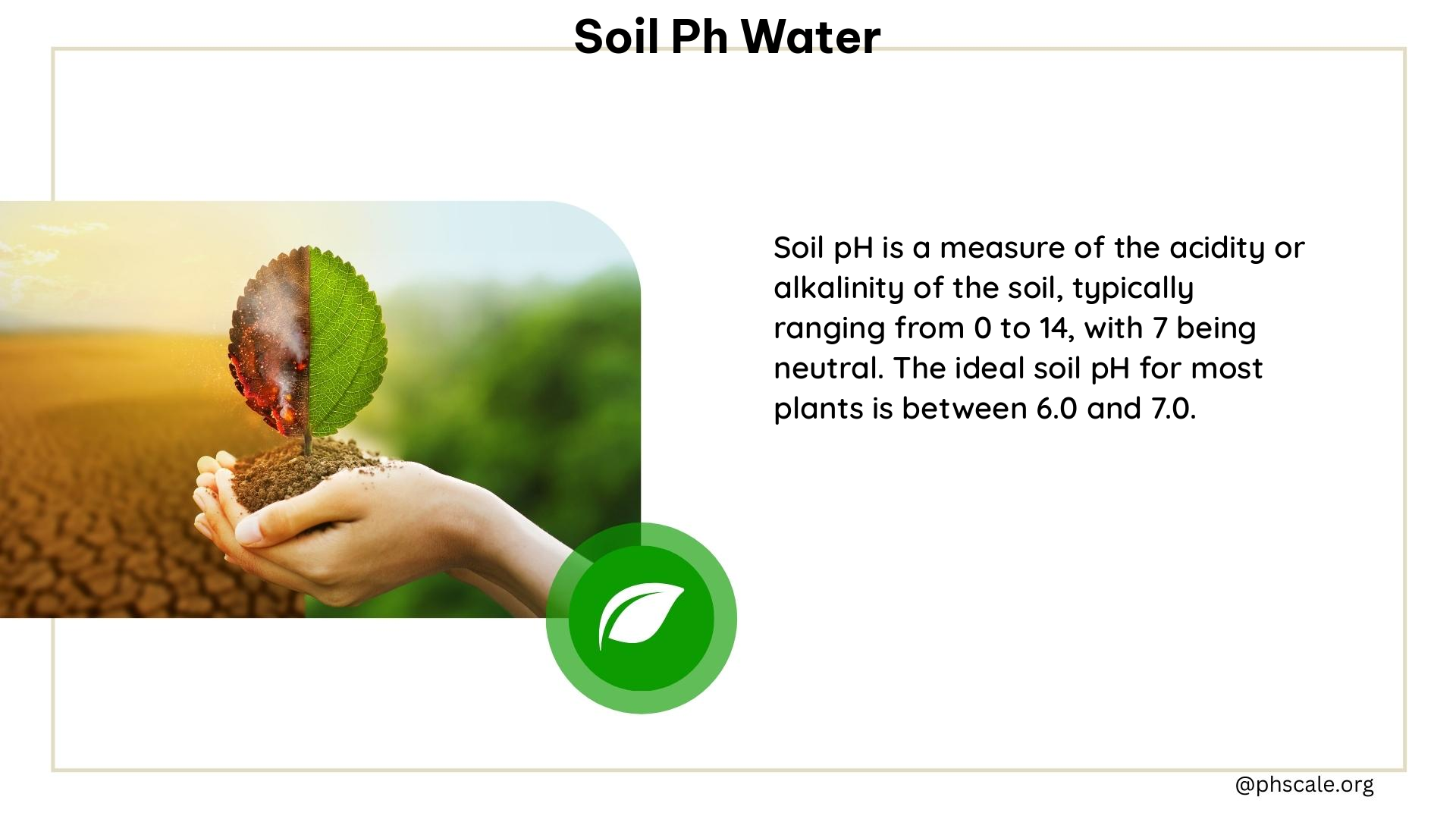Soil pH and water pH are crucial factors in plant growth and nutrient absorption. Understanding the optimal pH range, measuring techniques, and balancing methods can help gardeners and farmers ensure their plants thrive. This comprehensive guide explores the intricacies of soil pH, water pH, calcium chloride solution, pH measurements, soil acidity, and soil alkalinity, providing valuable insights for maintaining a healthy growing environment.
Soil pH and Water pH: The Foundations of Plant Health
Soil pH is a measure of the acidity or alkalinity of the soil, ranging from 3.5 to 10, with neutral soils falling between 6.5 and 7.5. Water pH is also crucial for plant growth, and the ideal pH for nutrient water varies depending on the plant, but generally, it should be close to the soil pH.
Calcium Chloride Solution and Accurate pH Measurements

Calcium chloride solution is used to measure soil pH more accurately than using water alone. The presence of calcium ions in the solution better represents the soil’s natural conditions, affecting the availability of nutrients and the resulting pH measurement.
Soil Acidity and Alkalinity: Balancing the Scale
Acidic soils, with a pH below 7, can lead to nutrient deficiencies and toxicity issues for plants. Alkaline soils, with a pH above 7, can also cause nutrient deficiencies and other problems. Maintaining the optimal pH range is essential for healthy plant growth.
Understanding the Differences in pH Measurements
pH measurements in calcium chloride solution differ from those in water due to the presence of calcium ions, which can increase the pH of the solution, making it more alkaline. This difference in measurement is important for accurately assessing the soil’s true pH and nutrient availability.
The Importance of Calcium Chloride Solution for Soil pH Measurements
Using calcium chloride solution increases the accuracy of soil pH measurements by better representing the soil’s natural conditions. Calcium ions affect the availability of nutrients, making the pH measurement more representative of the soil’s actual conditions.
Balancing Soil pH: Helpful Quantities and Techniques
The ideal pH range for nutrient water is generally between 5.5 and 7.5, depending on the plant. To balance soil pH, lime or dolomite can be added to acidic soils, and fertilizers like crushed sulfur can be used to lower the pH of alkaline soils. Regular soil testing is essential to monitor pH levels and make adjustments as needed.
Historical Perspectives and Contaminant Concerns
Soil pH has been a concern for agricultural practices for centuries, and the understanding of its effects on plant growth has evolved over time. Contaminants like heavy metals, pesticides, and industrial waste can also affect soil pH, leading to nutrient deficiencies and toxicity issues.
Solutions and Alternatives for Maintaining Soil pH
Regular soil testing, adding lime or dolomite to acidic soils, and using fertilizers like crushed sulfur to lower the pH of alkaline soils are solutions to balance soil pH. Organic farming practices, using natural fertilizers, and crop rotation can also help maintain a balanced soil pH without relying on chemical additives.
By understanding the importance of soil pH and water pH, gardeners and farmers can create an optimal growing environment for their plants, ensuring they receive the necessary nutrients and thrive. This comprehensive guide provides the knowledge and tools to effectively manage soil pH and water pH for healthy, vibrant plant growth.
References
- Plagron. (n.d.). Ph levels for plants: The ideal soil ph and nutrient water ph. Retrieved from https://plagron.us
- Queensland Government. (2013, September 24). Soil pH. Retrieved from https://www.qld.gov.au/environment/land/management/soil/soil-properties/ph-levels
- SUNY ESF. (n.d.). Soil pH: What it means. Retrieved from https://www.esf.edu/eis/eis-soil-ph.php
- Penn State Extension. (2023, June 28). Understanding Soil pH. Retrieved from https://extension.psu.edu/understanding-soil-ph
- Wikipedia. (n.d.). Soil pH. Retrieved from https://en.wikipedia.org/wiki/Soil_pH.
